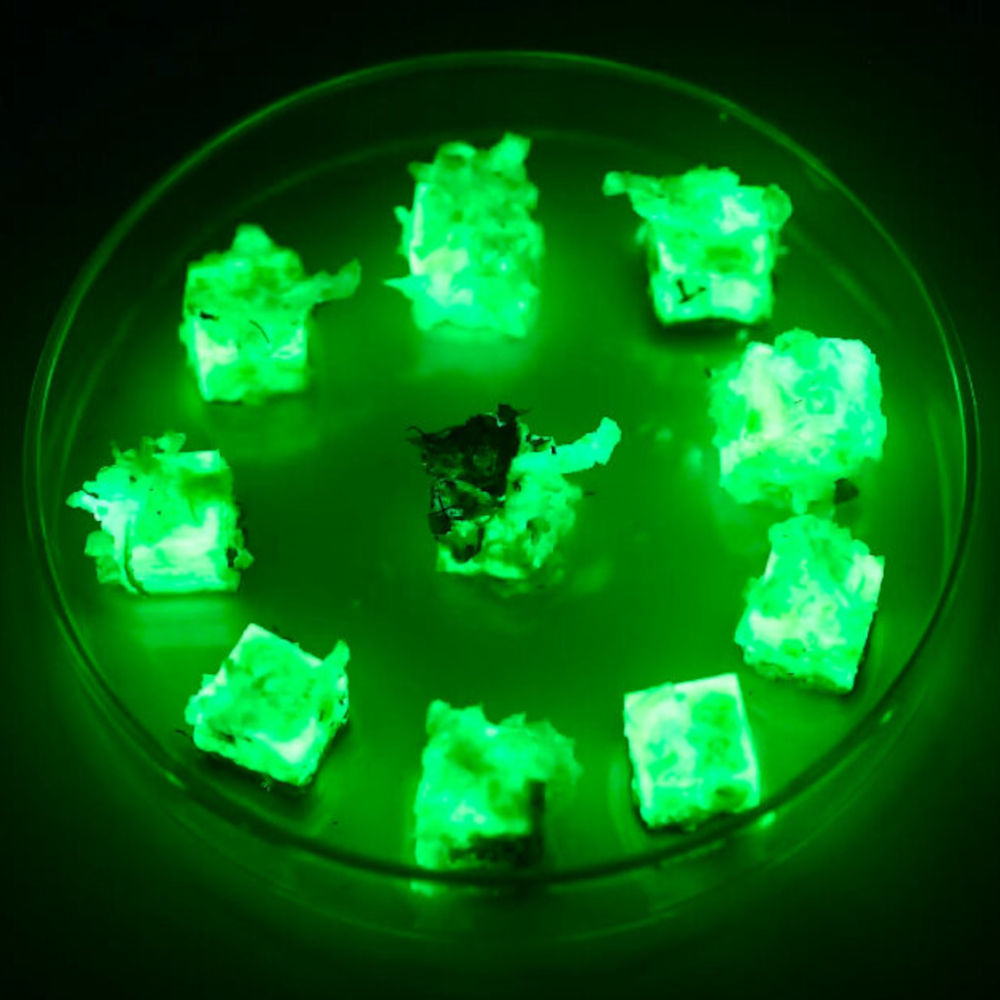Low-cost smart windows
Smart windows, varying the amount of light coming through the glass, can now be produced economically
The combination of wood and bioluminescent fungi has led to the development of a material that emits light without relying on external energy sources.
Few sights are as mesmerising as a bioluminescent sea, glowing with the light of jellyfish or microscopic algae. This natural phenomenon has inspired the development of an innovative material with potential applications in construction and urban environments. Swiss researchers have harnessed a parasitic fungus and combined it with wood—an abundant and renewable resource—to achieve this breakthrough. The key lies in a component called luciferin. In this article, we explore the discovery and its possible applications.
First, it is important to clarify that luciferin is a key organic molecule in the process of bioluminescence—the ability of certain living organisms to emit light. This glow occurs when luciferin reacts with luciferase, an enzyme that catalyses its oxidation in the presence of oxygen and adenosine triphosphate (ATP). This highly efficient mechanism produces light with minimal heat, enabling various species to use it for courtship, communication, or as a defence mechanism in dark environments such as the deep sea or nocturnal forests.
Different forms of luciferin have evolved in nature, adapted to the organisms that produce them. Some of the most well-known bioluminescent species include fireflies (Lampyridae), lantern fish (Photoblepharon), and luminous squid (Watasenia scintillans). While bioluminescence is rarer in the plant kingdom, it does occur in bacteria that colonise plant roots and tissues, as well as in certain fungi, such as foxfire (Panellus stipticus). This fungus has now paved the way for the development of an eye-catching bioluminescent wood.

More than 2,300 years ago, Aristotle documented an unusual phenomenon: in certain forests, pieces of wood appeared to glow mysteriously at night. He called it “cold fire,” a term later translated as foxfire or fairy fire. Scientists later discovered that a parasitic fungus was behind the glow, thanks to the presence of luciferin.
Today, science continues to drive the development of innovative building materials, from those that provide thermal insulation to others that harden under pressure. The latest addition to this expanding toolkit is bioluminescent wood, which capitalises on the phenomenon first observed by Aristotle. Swiss mycological researcher Francis Schwarze has turned to Desarmillaria tabescens, one of more than seventy known species of bioluminescent fungi, to create this novel material.
The research, published in Advanced Science, describes a biohybrid material combining balsa wood with the fungus. Experiments revealed that the fungus metabolises the lignin in the wood and generates bioluminescence in the process, all without compromising the wood’s strength, as its cellulose remains intact.
The painstaking production process requires three months of incubation and moisture absorption to achieve peak luminosity. The resulting glow, a greenish light with a wavelength of 560 nanometres, is triggered when the material comes into contact with air.
Schwarze and his team suggest that this bioluminescent wood could have a range of applications, from urban signage and park lighting to home furnishings and even glowing architectural structures. As a self-illuminating material derived from sustainably sourced wood, it also offers the advantage of a lower carbon footprint.
However, the technology still has some limitations. At present, the bioluminescent effect lasts for only around ten days, though researchers are working on ways to extend its lifespan through modifications to the production process.
Beyond bioluminescent coatings and structures, fungi are also being explored as sustainable materials for construction and furniture manufacturing with lower carbon emissions. You can read more about this emerging field, known as mycotecture, in this article. And if you want to stay up to date with innovations in building materials, be sure to subscribe to our newsletter at the bottom of this page.
Source:
All fields are mandatory.
Read the most discussed articles
{{CommentsCount}} Comments
Currently no one has commented on the news.
Be the first to leave a comment.
{{firstLevelComment.Name}}
{{firstLevelComment.DaysAgo}} days ago
{{firstLevelComment.Text}}
Answer{{secondLevelComment.Name}}
{{secondLevelComment.DaysAgo}} days ago
{{secondLevelComment.Text}}